yanxu's blog
EDM machine is an advanced equipment that uses electric pulses to perform precision processing on metal workpieces. Its development history carries the continuous progress and innovation of human industrial manufacturing technology. From the simple principle at the beginning of its birth to today's high-precision and high-efficiency applications, the development history of EDM machines is eye-catching. This article will take you to review the history of EDM machines, discuss their development, and look forward to future development trends.
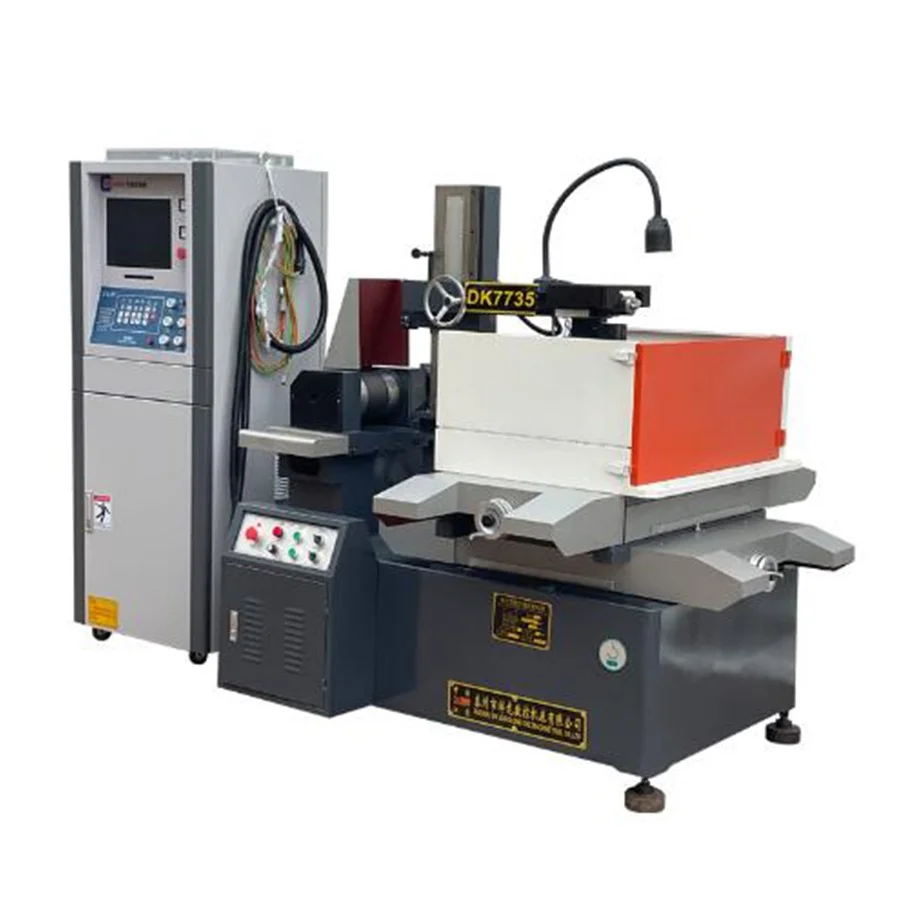
Electrical discharge machining technology can be traced back to the 1940s, when American scientists discovered the principle that electric pulses can produce tiny discharges on the metal surface, thereby achieving precise cutting of metals. With in-depth research on this principle, in 1943, American scientist Bruckner invented the first commercial EDM machine, marking the official entry of EDM technology into the field of industrial application.
Over the following decades, EDM technology underwent a transformation from mere laboratory principles to industrial applications. With an in-depth understanding of the principle of electric pulse discharge and the continuous improvement of mechanical equipment, EDM machine has gradually become indispensable and important equipment in the field of metal processing.
2. Technical innovation and application expansion of EDM machineWith the continuous advancement of science and technology, EDM technology is also constantly innovating and developing. From the initial manual operation to today's CNC automation system, the technical level of EDM machines has been greatly improved. The application of advanced technologies such as high-frequency pulse discharge technology, multi-axis linkage control systems, and intelligent processing software has made EDM machines play an increasingly important role in precision mold processing, aerospace parts processing, and medical device manufacturing.
In addition, with the rise of 3D printing technology, EDM technology has also found new applications in this field. By combining 3D printing and EDM technology, rapid manufacturing and precision processing of metal parts with complex structures can be achieved, bringing new development opportunities to the manufacturing industry.
3. Future Outlook: Development Trend of EDM TechnologyLooking to the future, with the continuous development of new-generation information technologies such as artificial intelligence, big data, and cloud computing, EDM technology will also usher in new development opportunities. Intelligence and automation will become the development trend of EDM machines in the future. Through intelligent processing systems and adaptive control technology, efficient processing and precision processing of complex parts can be achieved.
At the same time, with the in-depth research on materials science, the emergence of new materials will also pose new challenges and opportunities to EDM technology. How to better adapt to the processing needs of new materials will become one of the important directions for the development of EDM technology in the future.
In short, as an important metal processing technology, EDM technology's development history carries the continuous progress and innovation of human industrial manufacturing technology. In the future, with the continuous development of science and technology and the continuous expansion of application fields, EDM technology will surely usher in more brilliant development prospects.
The history and future development of EDM machines is a process full of technological innovation and application expansion. From the simple principle at the beginning of its birth to today's high-precision and high-efficiency applications, the development history of EDM machines is eye-catching. It is believed that in the near future, EDM technology will continue to make greater contributions to the development of human industrial manufacturing technology.
https://www.jsxlskcnc.com/The-history-and-future-of-EDM-machine-from-birth-to-innovation.html
Perfume is a kind of cosmetic that can make people feel happy. It can make people feel a unique scent and atmosphere in an instant. The perfume spray pump in the perfume bottle is an important part of the perfume. It can spray the perfume on the body, making people feel the rich and lasting fragrance. However, different types of perfumes require different types of perfume spray pumps, so when choosing a perfume spray pump, you need to choose according to the type of perfume. This article will introduce how to choose the right perfume spray pump according to different perfume types.
Eau de Toilette is a light-scented, short-lasting perfume that is usually suitable for use in spring and summer. Since the fragrance of eau de toilette is relatively light, you need to choose a perfume spray pump with a larger spray volume and a wider spray range, so that the fragrance can be sprayed evenly on the body and make the fragrance last longer.
2. Strong perfumeEau de Toilette is a perfume with a strong aroma and long-lasting, usually suitable for use in autumn and winter. Since the fragrance of concentrated perfume is relatively strong, you need to choose a perfume spray pump with a smaller spray volume and a narrower spray range, so that the fragrance can be sprayed on the body more concentratedly, making the fragrance more intense.
3. Neutral perfumeUnisex perfume is a kind of perfume suitable for men and women. It usually has a neutral and fresh fragrance and is suitable for use in any season. Since the aroma of neutral perfume is relatively neutral, you need to choose a perfume spray pump with a moderate spray volume and a moderate spray range, so that the fragrance can be sprayed evenly on the body, neither too strong nor too light.
4. Floral perfumeFloral perfume is a kind of perfume with floral fragrance as the main component, usually suitable for use in spring and summer. Since the fragrance of floral perfume is relatively fresh and fragrant, you need to choose a perfume spray pump with a larger spray volume and a wider spray range, so that the floral fragrance can be sprayed evenly on the body and the fragrance will last longer.
5. Woody PerfumeWoody perfume is a kind of perfume with woody fragrance as the main component, which is usually suitable for use in autumn and winter. Since the aroma of woody perfume is relatively strong and woody, you need to choose a perfume spray pump with a smaller spray volume and a narrower spray range, so that the aroma can be sprayed concentratedly on the body to make the aroma more intense.
In addition to choosing a spray pump according to the type of perfume, we also need to consider the ingredients and characteristics of the perfume. Some perfumes may contain higher concentrations of essential oils, which requires a spray pump that can spray stably to avoid clogging or uneven spraying due to thick ingredients. In addition, some perfumes may contain granular glitter or sediment, which requires a spray pump that can spray evenly and is not easy to clog to ensure the appearance and quality of the perfume.
In general, choosing a suitable perfume spray pump requires taking into account the type, ingredients and characteristics of the perfume to ensure the best spray effect and fragrance release. At the same time, the design of the perfume spray pump also needs to take into account the user experience and brand image to enhance the overall quality and value of the perfume. I hope these suggestions can help you choose the right spray pump to add more charm to your fragrance.
https://www.jinbaosprayer.com/How-to-choose-the-right-perfume-spray-pump-according-to-different-perfume-types.html
EDM wire cut machine is an advanced processing equipment whose history can be traced back to the 20th century. The development of this machine has gone through many milestones, from the initial concept to today's high degree of automation and precision machining capabilities. This article will delve into the history of the EDM wire cut machine and reveal how it developed from a simple concept to indispensable and important equipment in modern manufacturing.
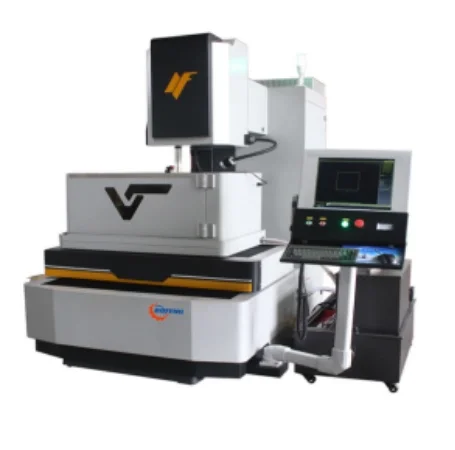
The history of EDM wire cut machines can be traced back to the spark machining technology at the end of the 18th century. At that time, scientists discovered that sparks were generated when electric current passed through conductive materials. This phenomenon laid the foundation for later EDM technology.
In the early 20th century, EDM technology was first discovered. At that time, people realized the potential for precision cutting by generating electric sparks on metal surfaces. As this technology was further studied, people began to try to use wire to achieve finer cuts. This marks the beginning of the prototype of EDM wire cut machine.
With the development of electronic technology, the first commercial EDM wire cut machine came out in the 1960s. Although the machines of this period were simple in function, they laid the foundation for later development. With the continuous exploration of material science and automation technology, EDM wire cut machine has gradually realized digital control and automated processing, greatly improving production efficiency and processing accuracy.
Entering the 21st century, with the rapid development of computer technology, EDM wire cut machines have ushered in revolutionary changes. Advanced CAD/CAM software and high-performance CNC systems enable EDM wire cut machines to achieve more complex processing tasks, and are thus widely used in aerospace, automobile manufacturing, mold processing, and other fields. At the same time, the continuous emergence of new materials has also promoted the technological innovation of EDM wire cut machines, enabling them to adapt to more diverse processing needs.
Today, EDM wire cut machine has become indispensable and important piece of equipment in the modern manufacturing industry. Its high-precision and high-efficiency processing capabilities bring great convenience to the manufacturing industry and promote the development of the manufacturing industry. At the same time, with the continuous integration of artificial intelligence and big data technology, EDM wire cut machines are developing in an intelligent and networked direction, providing strong support for the digital transformation of the manufacturing industry.
In general, the history of EDM wire cut machine is a microcosm of the development history of modern manufacturing. Its development has gone through countless efforts and innovations from its initial concept to today's high degree of automation and precision machining capabilities. It is believed that in the near future, EDM wire cut machines will continue to play an important role in promoting the manufacturing industry toward a more intelligent and efficient future.
https://www.bofengmachinery.com/The-history-of-EDM-wire-cut-machine-from-development-to-innovation.html
Drilling fluid additives play a vital role in modern oil drilling. They improve drilling fluid performance, increase drilling efficiency, and protect well walls from damage. However, to ensure the effectiveness and stability of these additives, proper storage and transportation methods are crucial. This article discusses how to optimize the storage and transportation of drilling fluid additives to ensure smooth drilling operations.
Environmental requirements for storing drilling fluid additivesDrilling fluid additives are usually fine chemicals with high requirements for environmental conditions. The following are environmental requirements to consider when storing drilling fluid additives:
1. Temperature control: Drilling fluid additives should be stored at a constant temperature to avoid excessively high or low temperatures from adversely affecting their performance.
2. Moisture and moisture-proof: Drilling fluid additives are very sensitive to moist environments, so they should be stored in a dry place to avoid moisture.
3. Protect from light: Some drilling fluid additives are sensitive to sunlight and ultraviolet rays, so they should be stored in a dark environment to prevent damage to their performance.
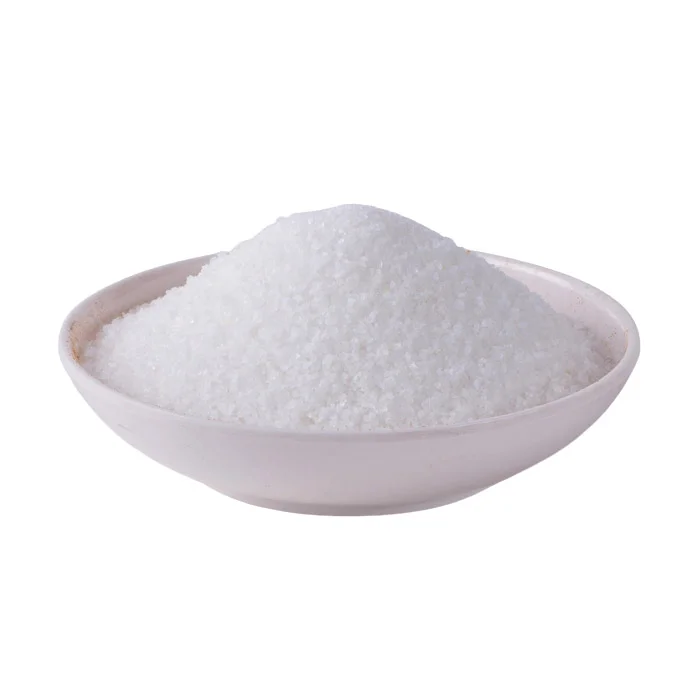
Proper packaging and labeling are critical for the storage and transportation of drilling fluid additives. Here are some key takeaways:
1. Packaging materials: Choose packaging materials that meet international standards, such as plastic drums or steel drums, to ensure the safety and stability of the additives.
2. Labeling requirements: Clearly mark the name, batch number, production date, expiration date, and other information of the additive on the package to facilitate traceability and management.
Transportation precautionsThe transportation of drilling fluid additives requires special attention to the following points:
1. Choose the appropriate transportation method: According to the nature and quantity of the additive, choose the appropriate transportation method, such as land transportation, sea transportation or air transportation.
2. Avoid severe vibrations: During transportation, severe vibrations and collisions should be avoided to prevent leakage or deterioration of additives.
3. Temperature control: During transportation, the temperature should be controlled to prevent excessively high or low temperatures from adversely affecting the performance of the additives.
4. Safety measures: During transportation, necessary safety measures should be taken, such as fire prevention, explosion prevention, etc., to ensure the safety of the additives.
Optimizing the storage and transportation of drilling fluid additives is key to ensuring smooth drilling operations. The effectiveness and stability of drilling fluid additives can be ensured by following appropriate environmental requirements, correct packaging and labeling, and attention to shipping details. Drilling fluid additives work best when provided with the correct storage and transportation conditions, improving the efficiency and safety of drilling operations.
https://www.scdbwhb.com/Storage-and-transportation-of-drilling-fluid-additives.html
In modern industrial fields, the operating efficiency and stability of mechanical equipment are crucial. As an important part of the mechanical transmission system, tie rod cylinder plays an indispensable role in industrial applications. This article will delve into the definition, structure, and working principle of tie rod cylinders and their important role in industrial applications.
Part 1: Definition and structure of tie rod cylinderA tie rod cylinder is a common pneumatic or hydraulic actuator that consists of multiple tie rods connected together. It usually consists of components such as cylinder barrels, pistons, piston rods, seals, connecting rods, and connecting bolts. This structure enables tie rod cylinders to produce linear motion in industrial equipment and transmit force to the desired location.
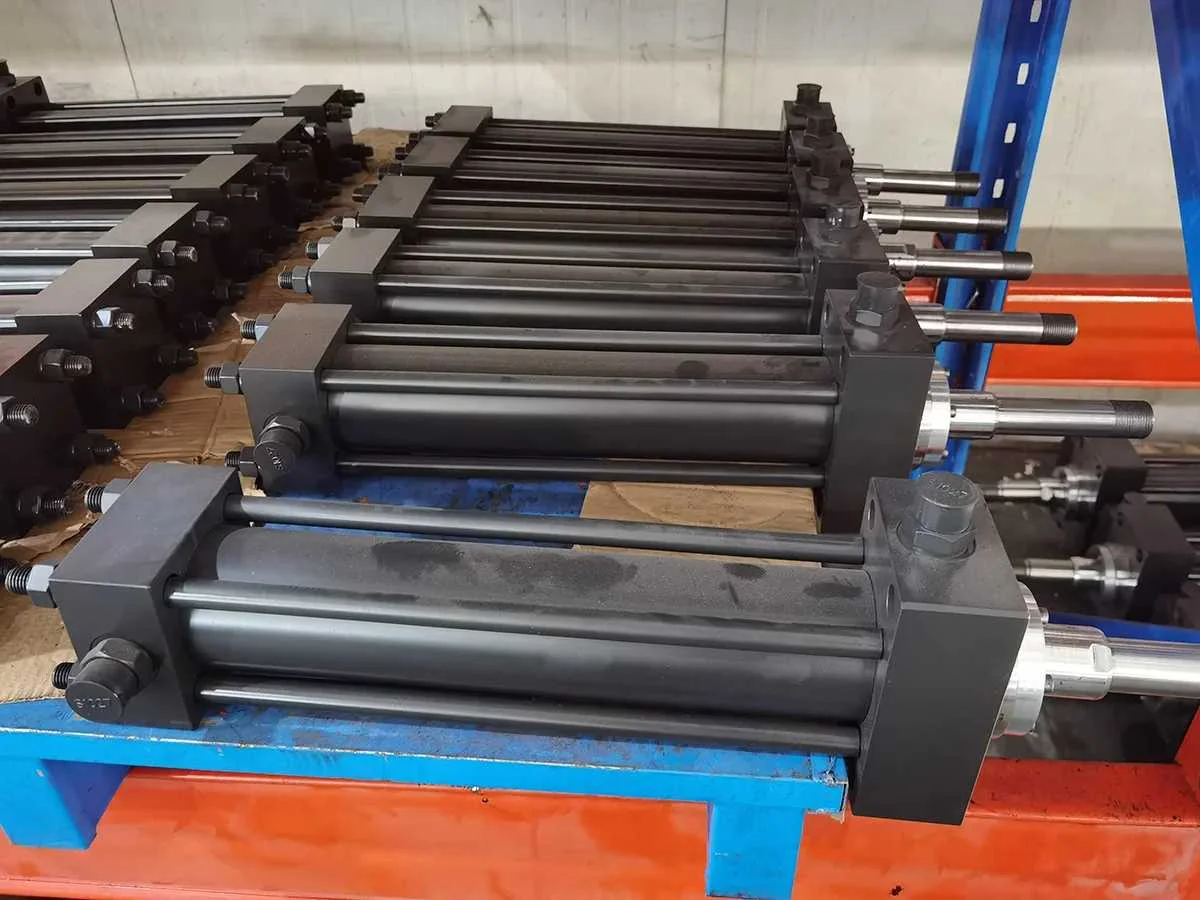
The working principle of a tie rod cylinder is based on the mechanical principle of hydraulic or pneumatic pressure. When hydraulic or pneumatic pressure passes through the air inlet or hydraulic port entering the cylinder barrel, the piston will be affected by the pressure and move forward or backward. This movement is transmitted to the connecting rod through the piston rod, thereby realizing the movement of the mechanical equipment. By controlling the inlet and outlet of hydraulic or pneumatic pressure, the tie rod cylinder can achieve forward, reverse, or stop motion.
Part 3: The role of tie rod cylinder in industrial applications1. Power transmission: A tie rod cylinder can convert hydraulic or pneumatic energy into mechanical energy, thereby realizing the movement of mechanical equipment. It is widely used in various industrial fields, such as automobile manufacturing, machining, aerospace, etc.
2. Load carrying capacity: A tie rod cylinder can withstand larger loads, making it widely used in heavy machinery and equipment. It can adapt to different load requirements by adjusting the hydraulic or pneumatic pressure.
3. Precise control: The tie rod cylinder has precise motion control capabilities and can achieve high-precision position control and speed control. This makes it widely used in industrial applications that require precise positioning and motion control, such as machine tools, automated production lines, etc.
4. Long life and reliability: The structural design of the tie rod cylinder gives it a long service life and high reliability. It uses high-quality seals and materials to operate normally in harsh working environments and reduce the frequency of maintenance and replacement.
As a source of strength in the industrial world, tie rod cylinders play an important role in modern industrial applications. It realizes the movement of mechanical equipment by converting hydraulic or pneumatic energy into mechanical energy and has the advantages of load-carrying capacity, precise control, long life, and reliability. With the continuous development of industrial technology, tie rod cylinders will continue to play an important role in various fields and promote the progress and development of industrial production.
https://www.toringcylinder.com/Tie-Rod-Cylinder-the-backbone-of-industrial-applications.html
In the wave of the information age, optical communication, as a high-speed, high-bandwidth transmission method, is rapidly emerging and changing our lives. As the core component of optical communication systems, optical modules have attracted much attention in their future development trends. This article will discuss the future development trends of optical modules and look forward to their bright prospects in the communications field.
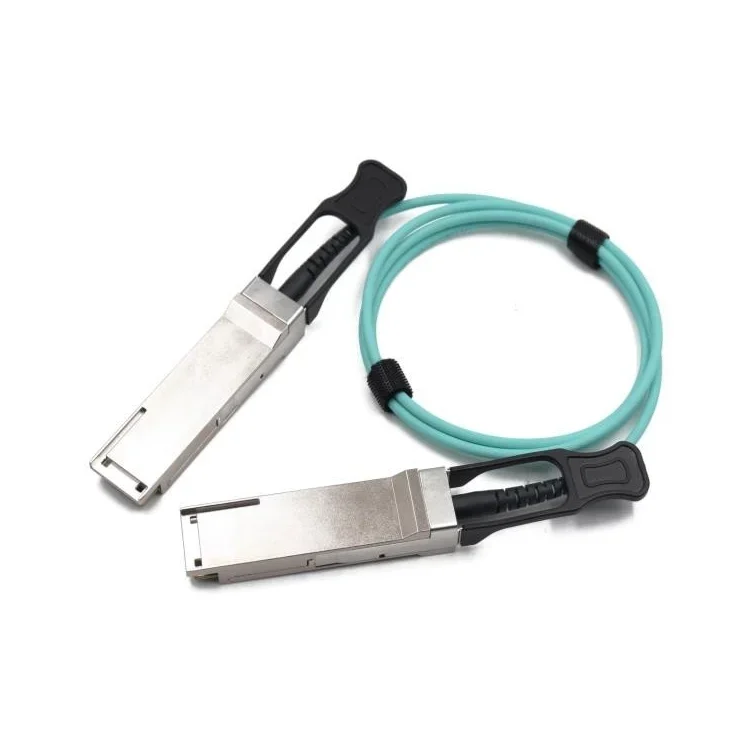
With the rapid development of cloud computing, big data, and the Internet of Things, the demand for high speed and high bandwidth is growing day by day. In the future, we will develop towards higher transmission rates, such as 400G, 800G, and even 1T optical modules, which have become a hot research topic. By using new materials, new processes, and new technologies, optical modules will break through the bottleneck of transmission speed and bring faster and more stable data transmission capabilities to the communications field.
2. MiniaturizationWith the vigorous development of mobile communications and the Internet of Things, the demand for miniaturized and lightweight optical modules is increasing. Future optical modules will be more compact and smaller to adapt to various complex application scenarios. Technologies such as micro-optical modules and on-chip optical modules will be widely used, making optical modules ubiquitous and bringing more convenience to people's lives.
3. IntegrationIn order to improve the performance and reliability of optical communication systems, future optical modules will tend to be more integrated. Technologies such as optical transceiver integrated modules and multi-channel modules will be widely used to achieve a high degree of integration of internal functions of optical modules and improve the stability and reliability of the system. At the same time, integrated optical modules will also reduce energy consumption and contribute to energy conservation and environmental protection.
As the core component of optical communication systems, optical modules have broad application prospects. In the field of communications, with the rapid development of 5G networks, there is an increasing demand for high-speed and high-bandwidth transmission. Optical modules will play an important role in 5G base stations and data centers and promote the revolution in communication technology. In addition, it will play an important role in data centers, industrial applications, medical fields, and other fields, providing strong support for the development of various industries.
As the core component of the optical communication system, the future development trend of optical modules will lead the bright light of the communication revolution. High speed, miniaturization, and integration are the main trends in the future development of optical modules, which will bring faster and more stable data transmission capabilities to the communications field. At the same time, the broad application prospects of optical modules in various fields will also promote social progress and development. It is believed that in the near future, optical modules will become an important support in the communications field, bringing more convenience and possibilities to people's lives.
https://www.fineconnco.com/Revealing-the-future-development-trend-of-optical-modules.html
With the continuous advancement of science and technology and the continuous expansion of application fields, pressure sensors, as important measurement equipment, are facing unprecedented development opportunities. In the future, it will play a more important role in various fields and bring more convenience and innovation to our lives and work. This article will explore the future prospects of pressure sensors and demonstrate their promising technological innovations.
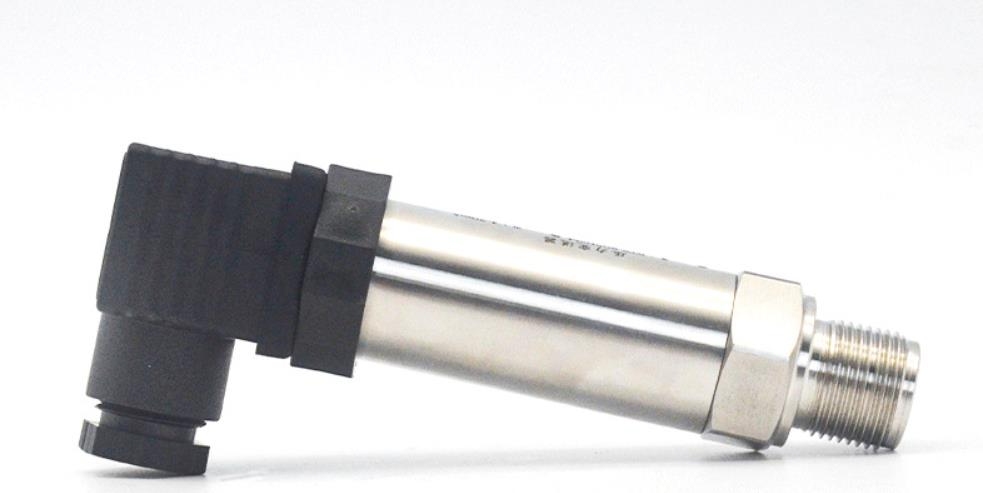
With the rapid development of intelligence and Internet of Things technology, pressure sensors will be seamlessly connected with other smart devices and systems to achieve higher levels of automation and intelligence. Through linkage with other sensors and equipment, more precise measurement and control can be achieved, improving production efficiency and product quality. For example, in the industrial field, it can be combined with temperature sensors, flow sensors, and other equipment to achieve comprehensive monitoring and control of the production process, improving production efficiency and product quality.
2. Development of miniaturization and integrationWith the continuous advancement of microelectronics technology, pressure sensors will become increasingly miniaturized and integrated. Miniaturized pressure sensors can be more easily embedded into various devices and systems to achieve a wider range of applications. For example, in the medical field, miniaturized pressure sensors can be embedded into implants in the body to monitor the patient's physiological status in real-time, providing doctors with more accurate diagnoses and treatment options.
3. Requirements for high precision and reliabilityWith the continuous advancement of science and technology, the requirements for the accuracy and reliability of pressure sensors are becoming higher and higher. Future pressure sensors will have higher accuracy and stronger anti-interference capabilities and can make accurate measurements under complex environmental conditions. For example, in aerospace, pressure sensors need to be able to function under extreme conditions of temperature, pressure, and vibration to ensure flight safety.
4. Multi-function and multi-parameter measurementFuture pressure sensors will not only be able to measure pressure but can also measure other parameters at the same time, such as temperature, humidity, flow, etc. This will allow it to play a role in more application scenarios and provide more comprehensive data support. For example, in the field of environmental monitoring, it can be combined with temperature sensors and humidity sensors to achieve comprehensive monitoring and assessment of the environment.
5. Application of new materials and new technologiesAs new materials and technologies continue to emerge, the performance of pressure sensors will be further improved. For example, the application of nanomaterials can improve the sensitivity and response speed of sensors, optical fiber sensing technology can realize remote monitoring of pressure, and flexible electronic technology can realize pressure measurement of complex shapes. The application of these new materials and new technologies will bring more innovations and breakthroughs to pressure sensors.
As an important measuring device, pressure sensor has a very broad future prospect. Through the integration of intelligence and the Internet of Things, the development of miniaturization and integration, the requirements for high precision and reliability, multi-function and multi-parameter measurement, and the application of new materials and new technologies, pressure sensors will play a more important role in various fields. important role. We have reason to believe that the future will bring more convenience and innovation to our lives and work.
https://www.dejintech.com/The-future-outlook-of-pressure-sensors-promising-technological-innovations.html
In the industrial field, safety issues in high-temperature and high-pressure environments have always attracted much attention. Especially in processes involving fluid control, such as chemical, petroleum, and natural gas industries, the safety of valves is particularly important. In order to ensure the safety of operators and equipment, valve interlock technology came into being. This article will discuss the applicability of valve interlock in high-temperature and high-pressure environments, and analyze its important role in ensuring industrial safety.
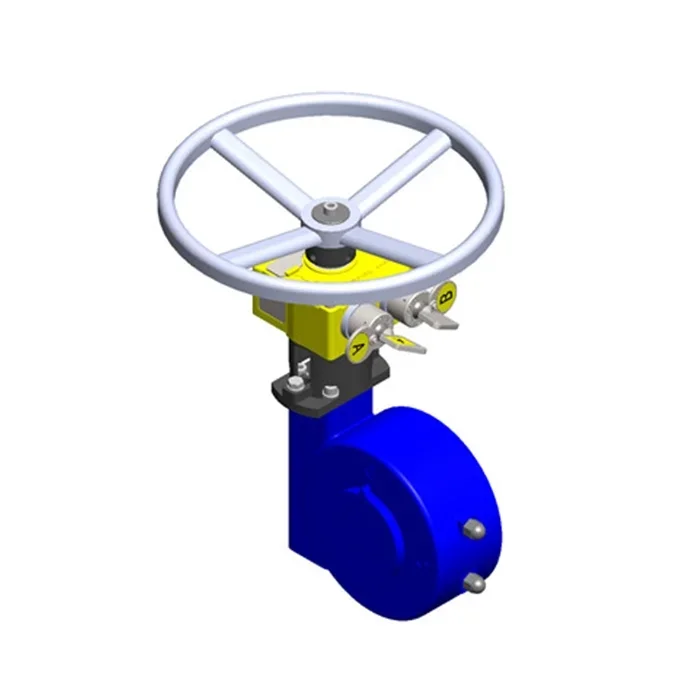
Process operations in high-temperature and high-pressure environments present significant risks. Drastic changes in temperature and pressure may lead to equipment failure, leakage, explosion, and other serious consequences. Therefore, it is crucial to ensure the correct operation and control of the valve. Valve interlock technology achieves strict control over valve operation by interlocking the valve with other equipment, thereby minimizing potential risks.
First of all, the applicability of valve interlock technology in high-temperature and high-pressure environments has been widely verified. It uses high-temperature and high-pressure-resistant materials and is designed to maintain stable performance under extreme conditions. Whether in high-temperature, high-pressure processes such as refineries, chemical plants, or power stations, valve interlocks can work reliably to ensure the safe operation of valves.
Secondly, valve interlock technology provides unique safety guarantees in high-temperature and high-pressure environments. Through the interlocking device, the valve interlock ensures the correct operation of the valve under specific conditions. For example, in high-temperature environments, valve interlock can monitor the temperature around the valve through a temperature sensor and close the valve when the temperature exceeds a safe range to prevent the equipment from overheating. In high-pressure environments, the valve interlock can monitor pipeline pressure through pressure sensors and close the valve when the pressure exceeds the set value to prevent equipment explosion.
In addition, valve interlock technology also has remote monitoring and control capabilities, allowing operators to remotely monitor and control the status of the valve from a safe location. This is undoubtedly an important advantage for operators working in high-temperature and high-pressure environments. They can obtain the status information of the valve in real-time through the monitoring system and close or open the valve when needed, thus minimizing the risk to the operator.
To sum up, valve interlock has demonstrated its unique applicability and safety capabilities in high-temperature and high-pressure environments. Not only does it maintain stable performance under extreme conditions, it also provides tight control over valve operation through interlocking devices. At the same time, valve interlock also has the ability to remotely monitor and control, providing operators with higher safety. Therefore, for those industries that require process operations in high-temperature and high-pressure environments, using valve interlock technology is a wise choice, which will bring higher safety and reliability to process operations.
https://www.nudango.com/Valve-Interlock-a-safe-guardian-in-high-temperature-and-high-pressure-environme.html
With the increasing awareness of environmental protection and the increasing demand for sewage treatment, sludge dewatering machine, as important equipment in the sewage treatment process, is also constantly developing and innovating. In the future, development trends will mainly focus on intelligence and automation. This article will discuss the future development trend of intelligence and automation of sludge dewatering machines, and analyze the advantages and challenges it brings.
1. Intelligent development trendsIntelligence is an important direction for the future development of sludge dewatering machines. With the continuous advancement of artificial intelligence and Internet of Things technology, the sludge dewatering machine will have a higher level of intelligence. First, intelligence will enable automated operation and monitoring. Through sensors and data acquisition technology, parameters such as moisture content, temperature, and concentration of sludge can be monitored in real-time, and intelligent control can be performed based on real-time data to improve dehydration efficiency and quality. Secondly, the intelligent sludge dewatering machine will be able to perform fault self-diagnosis and predictive maintenance. By analyzing historical data and machine learning algorithms, equipment failures can be predicted in advance and maintenance measures can be taken in a timely manner to reduce downtime and repair costs. In addition, remote monitoring and control can also be achieved to improve operation and maintenance efficiency and management levels.
2. Automation development trendsAutomation is another important direction for the future development of sludge dewatering machines. Through automation technology, a higher degree of automated operation and control can be achieved. First, the automated sludge dewatering machine will be able to achieve fully automated operation. Through the automated control system, operations such as automatic start and stop, automatic adjustment, and automatic cleaning can be realized, reducing manual intervention and improving production efficiency and stability. Secondly, the automated sludge dewatering machine will be able to automate the sludge treatment process. Through automated control systems and advanced treatment processes, processes such as automatic transportation, automatic dosing and automatic discharge of sludge can be realized, reducing manual operations, improving treatment efficiency, and reducing environmental pollution.
In addition to intelligence and automation, the future development of sludge dewatering machines will also involve other aspects of innovation and improvement. For example, the energy-saving design and environmental performance of the sludge dewatering machine will be further improved to reduce energy consumption and impact on the environment. At the same time, the material and structural design of the sludge dewatering machine will also be continuously innovated to improve the durability and processing effect of the equipment. In addition, the sludge dewatering machine will also be combined with other environmental protection equipment and technologies to form a more complete and efficient sludge treatment system to achieve resource recycling and environmentally sustainable development.
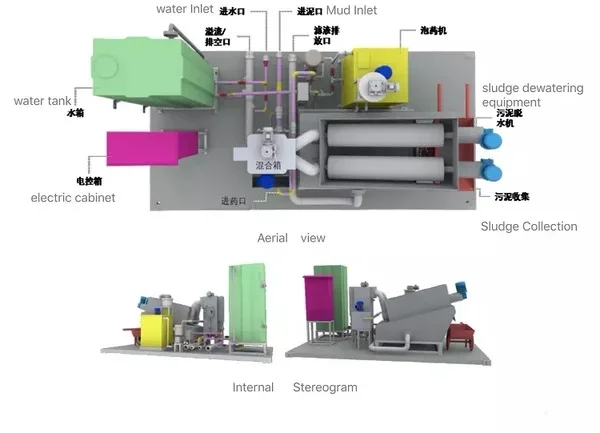
The development of intelligence and automation will bring many advantages to the sludge dewatering machine. First of all, intelligence and automation can improve dehydration efficiency and quality, reduce energy consumption and chemical usage, and reduce operating costs. Secondly, intelligence and automation can improve the stability and reliability of the sludge dewatering machine, reduce equipment failures and downtime, and improve production efficiency and operation and maintenance efficiency. In addition, intelligence and automation can also improve safety and environmental protection, and reduce manual operations and environmental pollution.
However, the development of intelligence and automation also faces some challenges. First of all, the application of intelligent and automation technology requires a large amount of data support and algorithm optimization, which puts forward higher requirements for data collection and processing capabilities. Secondly, the application of intelligent and automation technology requires professional technical talents and managers, which puts forward higher requirements for talent training and management levels. In addition, the application of intelligent and automation technology also needs to fully consider the safety and reliability of the equipment to avoid accidents and losses caused by technical failures or human errors.
To sum up, the future development trend of sludge dewatering machines will mainly focus on intelligence and automation. The development of intelligence and automation brings many advantages, improving dehydration efficiency and quality, reducing operating costs, and improving production efficiency and environmental protection. However, the development of intelligence and automation also faces some challenges, which need to be overcome in terms of technology, talent, and safety. Therefore, sludge dewatering machine manufacturers and users should actively promote the research, development, and application of intelligent and automated technologies to jointly promote the sustainable development of the sludge dewatering machine industry.
https://www.mingyecn.com/The-future-development-trend-of-sludge-dewatering-machine-intelligence-and-auto.html
As the global demand for renewable energy continues to grow, solar panels, as an important energy collection device, are gradually becoming the focus of attention. However, due to the diverse installation environments of solar panels, such as outdoors and rooftops, the dustproof and waterproof challenges they face are becoming increasingly prominent. This article will introduce the dustproof and waterproof design of solar panels and discuss how to protect the performance and lifespan of solar panels to ensure a stable supply of sustainable energy.
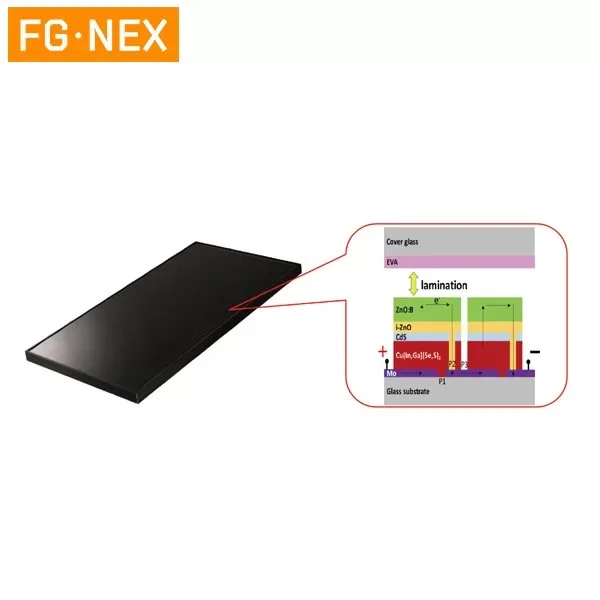
1. Closed structure: The surface of the solar panel usually adopts a closed structure to prevent dust, sand, and other particles from entering the interior of the panel. This design can effectively reduce dust coverage on the panel surface and improve light absorption efficiency.
2. Dust-proof coating: Coating a layer of dust-proof coating on the surface of the solar panel can block the adhesion of dust and reduce the frequency of cleaning. This coating is usually resistant to high temperatures, UV rays, and corrosion, and can protect the surface of the panel from erosion by the external environment.
3. Cleaning system: In order to further reduce the impact of dust on the solar panel, an automatic cleaning system can be installed. This system can regularly clean the panel surface to maintain its efficient working condition. Common automatic cleaning systems include water spray cleaning and mechanical brushing.
Waterproof design:1. Sealed back plate: The back of the solar panel is usually designed with a sealed back plate to prevent moisture from penetrating into the battery panel. This type of back sheet is usually made of weather-resistant materials, such as polymers or metals, and can effectively isolate outside moisture and humidity.
2. Conductive rubber pad: A conductive rubber pad can be added between the junction box and the bracket of the solar panel. This kind of rubber pad is waterproof and can prevent rainwater from penetrating into the junction box and protect the circuit safety inside the battery panel.
3. Junction box design: The junction box of the solar panel is an important part of the waterproof design. The junction box usually adopts a sealed structure and is equipped with waterproof joints and sealing rubber rings to ensure that the circuit inside the junction box is not corroded by moisture.
The dustproof and waterproof design of solar panels is key to protecting their performance and lifespan. Through dust-proof designs such as closed structures, dust-proof coatings, and cleaning systems, the impact of dust on battery panels can be reduced and energy conversion efficiency improved. Waterproof designs such as sealed back plates, conductive rubber pads, and waterproof junction boxes can effectively prevent moisture from penetrating into the battery panel and protect circuit safety. The application of these dust-proof and waterproof designs will provide a guarantee for the reliable operation of solar panels, promote the development of sustainable energy, and create a better future for mankind.
https://www.fgnexsolar.com/Dust-proof-and-Waterproof-Design-of-Solar-Panels.html


